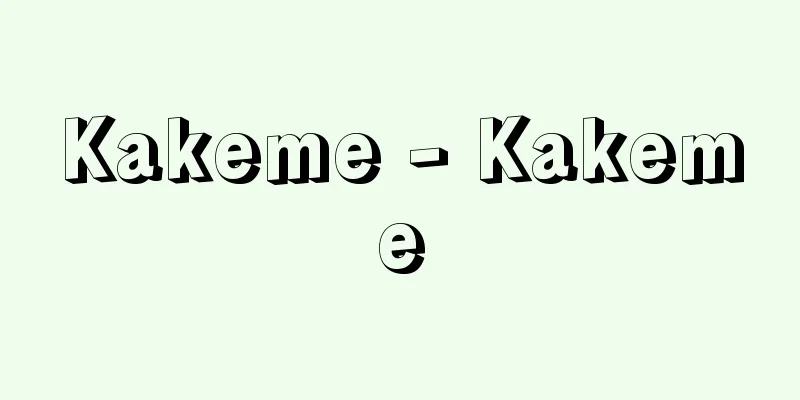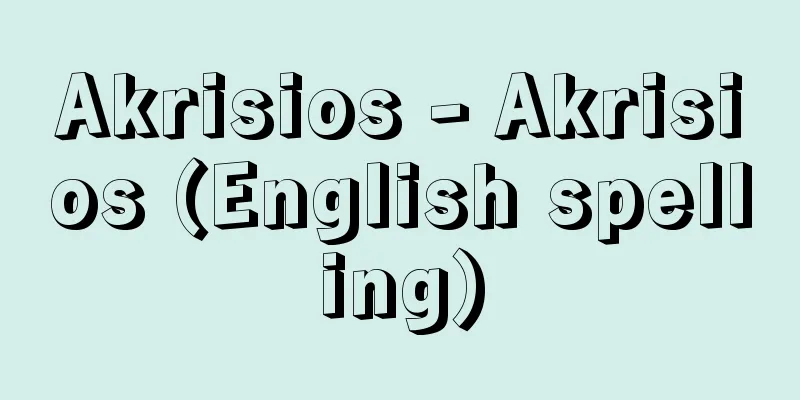Iron wheel

|
A Noh piece. It can be used as a fourth or fifth piece. It is a current piece for the five schools, but the Konparu school is a revival from the Taisho period. The author is unknown. It is based on the Sword Scroll of the Tale of the Heike, which tells us that an aristocratic woman who hates a man and becomes a demon is Ibaraki-doji. This Noh piece is about a woman who becomes a demon in the present world in order to kill her husband who abandoned her for a young woman. In the opening act, a priest (ai) from Kibune Shrine in Kyoto conveys a divine message to a woman (mae-shite) who is visiting the shrine at midnight, telling her that she will be transformed into a demon. Abe Seimei (waki), an onmyouji (magician), prays to a man (wakitsure) who is plagued by nightmares, to change the woman's curse. The woman (Go-shite), who has transformed into a demon, complains of her resentment for her love towards the man and first takes the life of the other woman, but is unable to take the life of her husband, who is protected by the gods, and disappears, saying, "I will wait until the right time to take him again." While "Lady Aoi" depicts the resentment of a noblewoman oppressed by culture and reason, "Iron Ring" is a straightforward tale of revenge driven by jealousy. Shindo Kaneto's film "Iron Ring" (1972) is successful in its technique of interweaving an ancient midnight pilgrimage of a woman, a Noh scene, and a modern love triangle. [Masuda Shozo] [Reference] |Source: Shogakukan Encyclopedia Nipponica About Encyclopedia Nipponica Information | Legend |
|
能の曲目。四番目物、また五番目物にも扱う。五流現行曲、ただし金春(こんぱる)流は大正の復曲。作者不明。出典は、男を恨んで鬼となった貴族の女、それが茨木(いばらき)童子であるとする『平家物語』「剣巻」による。自分を捨て若い女といっしょになった夫を取り殺そうと、現世で鬼となった女の能。京都貴船(きぶね)神社の神職(アイ)が、丑(うし)の刻詣(ときもう)での女(前シテ)に、鬼に変身させようとの神託を告げる前段。悪夢にうなされる男(ワキツレ)の願いに、女の呪(のろ)いを転じ変えようと祈る陰陽師(おんみょうじ)安倍清明(あべのせいめい)(ワキ)。鬼と変じた女(後シテ)は、男への愛の恨みを訴え、まず相手の女の命を奪うが、神々に守られた夫の命をとりえず、「時節を待ってまたとるべし」と消えていく。教養と理性に抑圧された貴婦人の恨みを描く『葵上(あおいのうえ)』に対し、『鉄輪』は直接的な嫉妬(しっと)の復讐(ふくしゅう)である。新藤兼人(しんどうかねと)の映画『鉄輪』(1972)は、古代の丑の刻詣での女と、能の場面と、現代の三角関係を錯綜(さくそう)させる手法で成功している。 [増田正造] [参照項目] |出典 小学館 日本大百科全書(ニッポニカ)日本大百科全書(ニッポニカ)について 情報 | 凡例 |
Recommend
House register - Ietsukecho
...A record of a survey of the actual state of th...
Tsugura
〘Noun〙① A container made of woven straw. A rice co...
"King Aizen's Lecture"
...Lectures appeared in the Heian period, and Sai...
Compulsory norms - Compulsory norms
A norm that determines certain violations as illeg...
Genre - genre (English) genre French
It refers to each individual art as a division of...
Takahashi Eisei
A Yamada school koto performer. (1) First Generati...
Gillis, HD - Gillis
…Many people were wounded during the war, and man...
Omi mosquito net - Oumi Kaya
Mosquito nets are a specialty of Omi (Shiga Prefe...
Canned Peaches - Kanto
… [use] Most peaches in Japan are white-fleshed v...
Karatsu (kiln)
...However, Asahi, Kosobe, and Akahada are kilns ...
Bernice Pauahi Bishop Museum
The Bernice Pauahi Bishop Museum is a private mus...
box
…This species is sometimes called Hontsuge (boxwo...
《Owari House Bag》 - Owari no Iezutto
…In 1792 (Kansei 4), he became a student of Motoo...
Buddhacarita (English spelling)
…After becoming the religious advisor to King Kan...
L'Homme machine
A book by the French materialist philosopher Julie...









